Chicago School of Architecture on:
[Wikipedia]
[Google]
[Amazon]
 Chicago's architecture is famous throughout the world and one style is referred to as the Chicago School. Much of its early work is also known as Commercial Style. In the
Chicago's architecture is famous throughout the world and one style is referred to as the Chicago School. Much of its early work is also known as Commercial Style. In the
 While the term "Chicago School" is widely used to describe buildings constructed in the city during the 1880s and 1890s, this term has been disputed by scholars, in particular in reaction to Carl Condit's 1952 book ''The Chicago School of Architecture''. Historians such as
While the term "Chicago School" is widely used to describe buildings constructed in the city during the 1880s and 1890s, this term has been disputed by scholars, in particular in reaction to Carl Condit's 1952 book ''The Chicago School of Architecture''. Historians such as
 Leiter II Building, 1891
*
Leiter II Building, 1891
*
 Monadnock Building, 1891–1893
*
Monadnock Building, 1891–1893
*
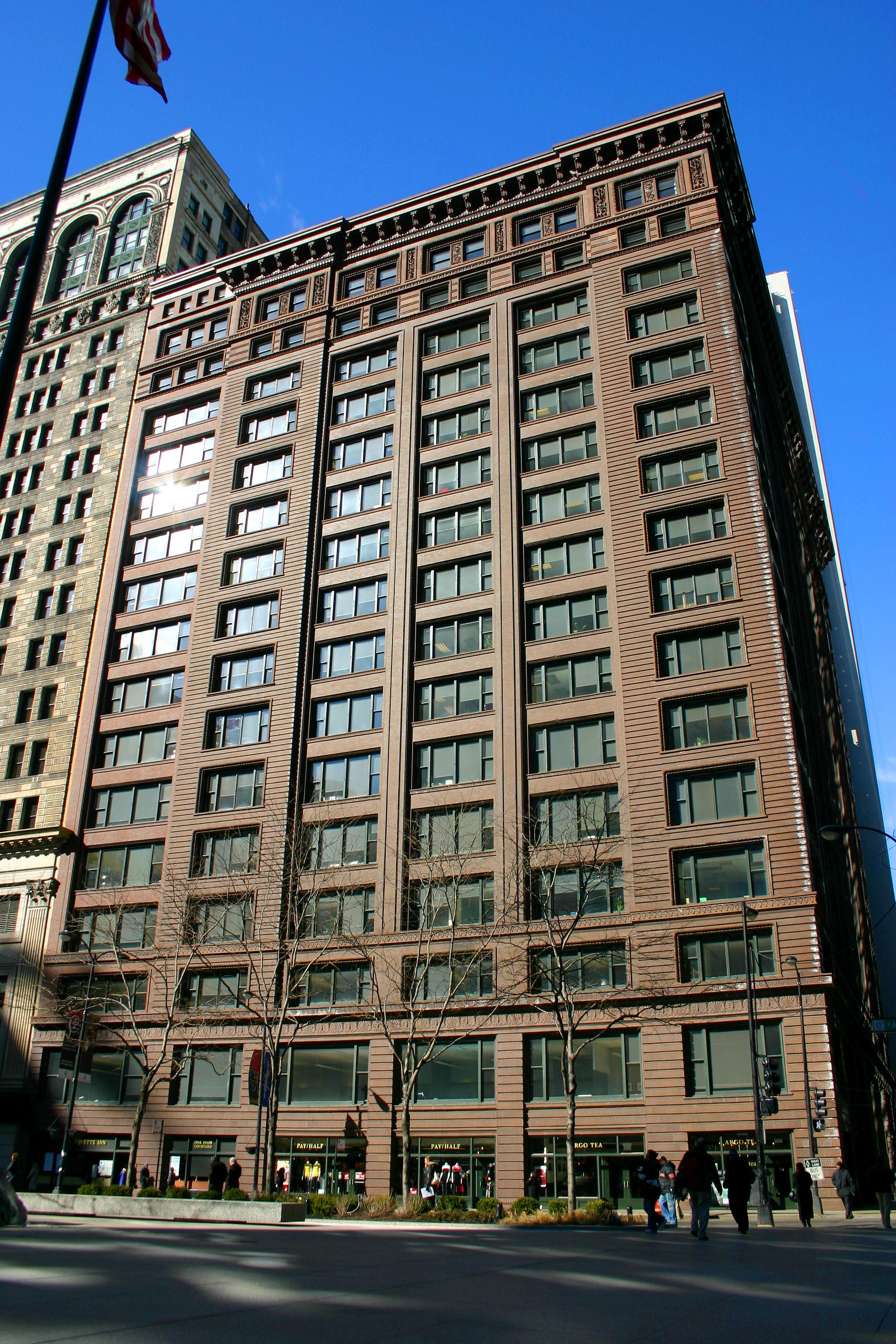 Marquette Building, 1895
*
Marquette Building, 1895
* Fisher Building, 1895-1896
*
Fisher Building, 1895-1896
*




 Transportation Building/Heisen Building, 1910-1911
Transportation Building/Heisen Building, 1910-1911
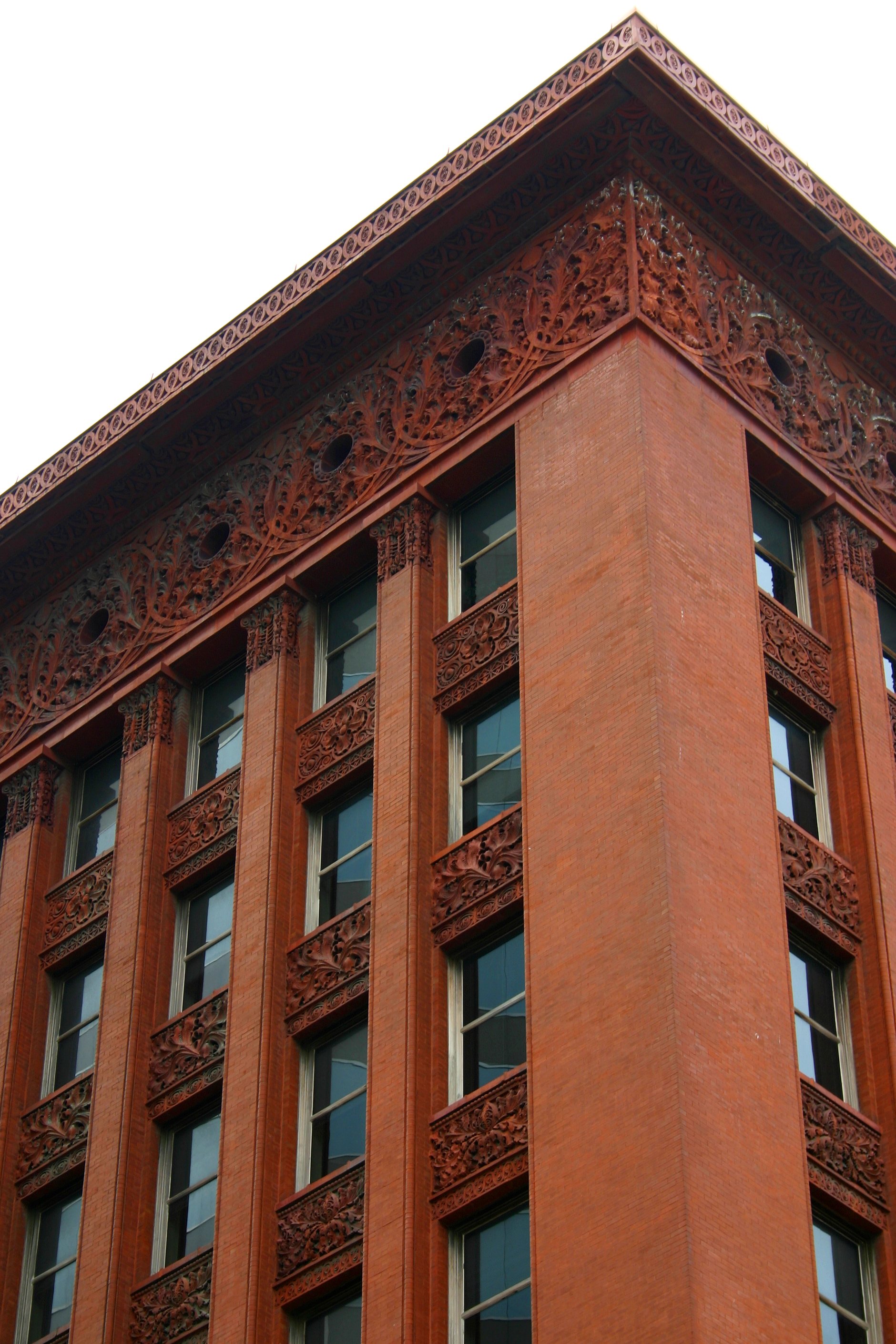 Wainwright Building, 1891, St. Louis, Missouri
*
Wainwright Building, 1891, St. Louis, Missouri
*

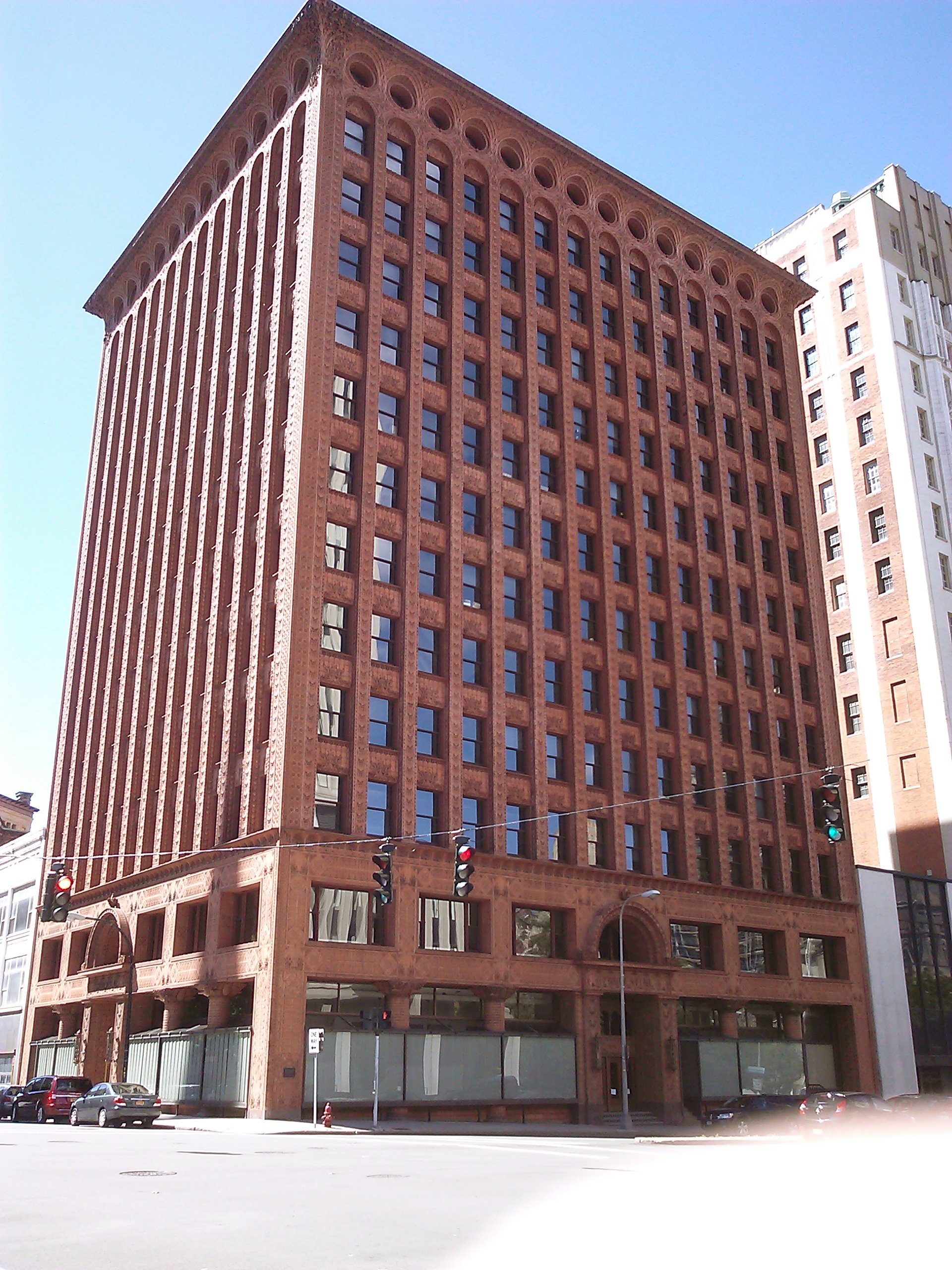 Prudential (Guaranty) Building, 1896, Buffalo, New York
*
Prudential (Guaranty) Building, 1896, Buffalo, New York
*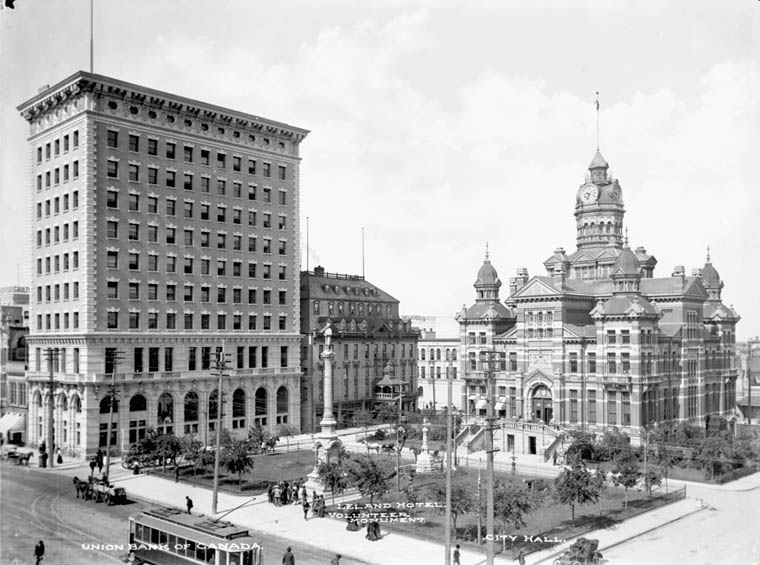

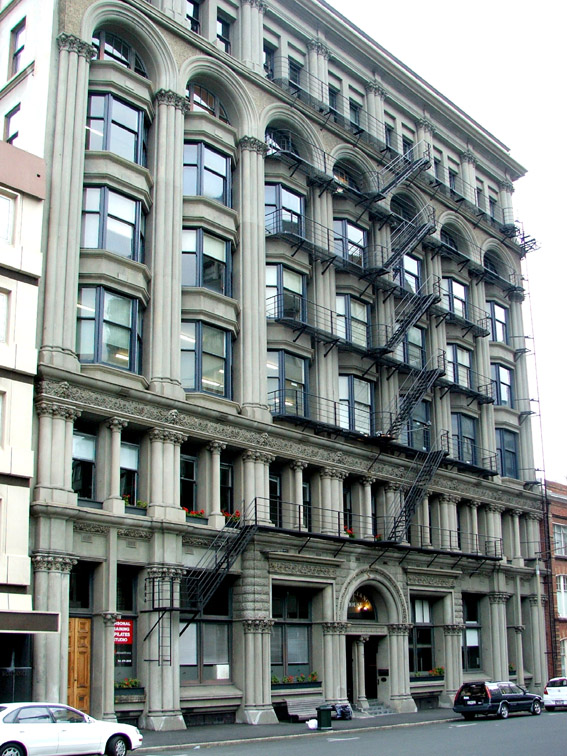 Consultancy House, 1910, Dunedin, New Zealand
*
Consultancy House, 1910, Dunedin, New Zealand
* Old National Bank Building, 1910, Spokane, Washington
*
Old National Bank Building, 1910, Spokane, Washington
* Swetland Building, 1910, Cleveland, Ohio
*
Swetland Building, 1910, Cleveland, Ohio
*
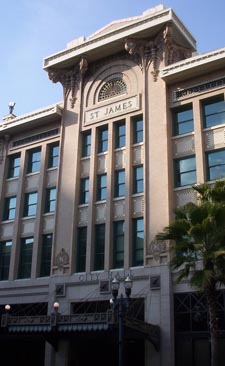


 LifeSavers Building, 1920, Port Chester, NY
*
LifeSavers Building, 1920, Port Chester, NY
*
 In the 1940s, a "Second Chicago School" emerged from the work of
In the 1940s, a "Second Chicago School" emerged from the work of
 Chicago's architecture is famous throughout the world and one style is referred to as the Chicago School. Much of its early work is also known as Commercial Style. In the
Chicago's architecture is famous throughout the world and one style is referred to as the Chicago School. Much of its early work is also known as Commercial Style. In the history of architecture
The history of architecture traces the changes in architecture through various traditions, regions, overarching stylistic trends, and dates. The beginnings of all these traditions is thought to be humans satisfying the very basic need of shelt ...
, the first Chicago School was a school of architects active in Chicago in the late 19th, and at the turn of the 20th century. They were among the first to promote the new technologies of steel-frame construction in commercial buildings, and developed a spatial aesthetic which co-evolved with, and then came to influence, parallel developments in European Modernism. A "Second Chicago School" with a modernist aesthetic emerged in the 1940s through 1970s, which pioneered new building technologies and structural system
A structure is an arrangement and organization of interrelated elements in a material object or system, or the object or system so organized. Material structures include man-made objects such as buildings and machines and natural objects such as ...
s, such as the tube-frame structure.
First Chicago School
 While the term "Chicago School" is widely used to describe buildings constructed in the city during the 1880s and 1890s, this term has been disputed by scholars, in particular in reaction to Carl Condit's 1952 book ''The Chicago School of Architecture''. Historians such as
While the term "Chicago School" is widely used to describe buildings constructed in the city during the 1880s and 1890s, this term has been disputed by scholars, in particular in reaction to Carl Condit's 1952 book ''The Chicago School of Architecture''. Historians such as H. Allen Brooks
H. Allen Brooks (November 6, 1925 – August 8, 2010) was an architectural historian and longtime professor at the University of Toronto. Brooks wrote on Frank Lloyd Wright and the Prairie School and on the early years of Le Corbusier.
Brook ...
, Winston Weisman
Winston may refer to:
Places Antarctica
* Winston Glacier
Australia
* Winston, Queensland, a suburb of the City of Mount Isa
United Kingdom
* Winston, County Durham, England, a village
* Winston, Suffolk, England, a village and civil pari ...
and Daniel Bluestone
Daniel is a masculine given name and a surname of Hebrew origin. It means "God is my judge"Hanks, Hardcastle and Hodges, ''Oxford Dictionary of First Names'', Oxford University Press, 2nd edition, , p. 68. (cf. Gabriel—"God is my strength"), ...
have pointed out that the phrase suggests a unified set of aesthetic or conceptual precepts, when, in fact, Chicago buildings of the era displayed a wide variety of styles and techniques. Contemporary publications used the phrase "Commercial Style" to describe the innovative tall buildings of the era, rather than proposing any sort of unified "school."
Some of the distinguishing features of the Chicago School are the use of steel-frame buildings with masonry cladding (usually terra cotta), allowing large plate-glass window areas and limiting the amount of exterior ornamentation. Sometimes elements of neoclassical architecture are used in Chicago School skyscraper
A skyscraper is a tall continuously habitable building having multiple floors. Modern sources currently define skyscrapers as being at least or in height, though there is no universally accepted definition. Skyscrapers are very tall high-ris ...
s. Many Chicago School skyscrapers contain the three parts of a classical column
A column or pillar in architecture and structural engineering is a structural element that transmits, through compression, the weight of the structure above to other structural elements below. In other words, a column is a compression member. ...
. The lowest floors functions as the base, the middle stories, usually with little ornamental detail, act as the shaft of the column, and the last floor or two, often capped with a cornice
In architecture, a cornice (from the Italian ''cornice'' meaning "ledge") is generally any horizontal decorative moulding that crowns a building or furniture element—for example, the cornice over a door or window, around the top edge of a ...
and often with more ornamental detail, represent the capital.
The "Chicago window
A Chicago window is a large fixed glass panel flanked by two narrower sashes of the same height, filling a structural bay. The large pane is a single panel of plate glass, and the flanking elements are vertical double-hung sash windows with no divi ...
" originated in this school. It is a three-part window consisting of a large fixed center panel flanked by two smaller double-hung sash windows. The arrangement of windows on the facade typically creates a grid pattern, with some projecting out from the facade forming bay windows. The Chicago window combined the functions of light-gathering and natural ventilation; a single central pane was usually fixed, while the two surrounding panes were operable. These windows were often deployed in bays, known as ''oriel window
An oriel window is a form of bay window which protrudes from the main wall of a building but does not reach to the ground. Supported by corbels, bracket (architecture), brackets, or similar cantilevers, an oriel window is most commonly found pro ...
s'', that projected out over the street.
Architects whose names are associated with the Chicago School include Henry Hobson Richardson, Dankmar Adler
Dankmar Adler (July 3, 1844 – April 16, 1900) was a German-born American architect and civil engineer. He is best known for his fifteen-year partnership with Louis Sullivan, during which they designed influential skyscrapers that boldly addr ...
, Daniel Burnham, William Holabird
William Holabird (September 11, 1854 in Amenia, New York – July 19, 1923 in Evanston, Illinois) was an American architect.
Holabird was the son of General Samuel B. Holabird and Mary Theodosia Grant. He studied at the United States Milit ...
, William LeBaron Jenney
William Le Baron Jenney (September 25, 1832 – June 14, 1907) was an American architect and engineer who is known for building the first skyscraper in 1884.
In 1998, Jenney was ranked number 89 in the book ''1,000 Years, 1,000 People: Ran ...
, Martin Roche
Martin Roche (1853–1927) was an American architect.
Life
In partnership with William Holabird, Martin Roche designed buildings following the Chicago School and that were landmarks in the development of early sky scrapers. He worked for Will ...
, John Root
John Wellborn Root (January 10, 1850 – January 15, 1891) was an American architect who was based in Chicago with Daniel Burnham. He was one of the founders of the Chicago School (architecture), Chicago School style. Two of his buildings hav ...
, Solon S. Beman
Solon Spencer Beman (October 1, 1853 – April 23, 1914) was an American architect based in Chicago, Illinois and best known as the architect of the planned Pullman community and adjacent Pullman Company factory complex, as well as Chicago's ...
, and Louis Sullivan. Frank Lloyd Wright started in the firm of Adler and Sullivan but created his own Prairie Style
Prairie School is a late 19th- and early 20th-century architectural style, most common in the Midwestern United States. The style is usually marked by horizontal lines, flat or hip roof, hipped roofs with broad Overhang (architecture), ove ...
of architecture.
The Home Insurance Building, which some regarded as the first skyscraper in the world, was built in Chicago in 1885
Events
January–March
* January 3– 4 – Sino-French War – Battle of Núi Bop: French troops under General Oscar de Négrier defeat a numerically superior Qing Chinese force, in northern Vietnam.
* January 4 – ...
and was demolished in 1931
Events
January
* January 2 – South Dakota native Ernest Lawrence invents the cyclotron, used to accelerate particles to study nuclear physics.
* January 4 – German pilot Elly Beinhorn begins her flight to Africa.
* January 22 – Sir I ...
.
Buildings in Chicago
* Leiter I Building, 1879 * Montauk Building, 1882–1883 * Rookery Building, 1886 * Auditorium Building, 1889 * Leiter II Building, 1891
*
Leiter II Building, 1891
*Ludington Building
The Ludington Building is the earliest-surviving, steel-frame building in Chicago, Illinois. It is located in the Chicago Loop community area. It was designed by William Le Baron Jenney and was named a Chicago Landmark on June 10, 1996. It was ...
, 1891-1892
* Monadnock Building, 1891–1893
*
Monadnock Building, 1891–1893
*
Reliance Building
The Reliance Building is a skyscraper located at 1 W. Washington Street in the Loop community area of Chicago, Illinois. The first floor and basement were designed by John Root of the Burnham and Root architectural firm in 1890, with the rest of t ...
, 1890-1895
* Marquette Building, 1895
*
Marquette Building, 1895
* Fisher Building, 1895-1896
*
Fisher Building, 1895-1896
*Gage Group Buildings
The Gage Group Buildings consist of three buildings located at 18, 24 and 30 S. Michigan Avenue, between Madison Street and Monroe Street, in Chicago, Illinois. They were built from 1890–1899, designed by Holabird & Roche for the three milline ...
, 1898
*
Sullivan Center
The Sullivan Center, formerly known as the Carson, Pirie, Scott and Company Building or Carson, Pirie, Scott and Company Store, is a commercial building at 1 South State Street at the corner of East Madison Street in Chicago, Illinois. Louis S ...
, 1899
*Heyworth Building
The Heyworth Building is a Chicago Landmark located at 29 East Madison Street, on the southwest corner of Madison Street and Wabash Avenue in Chicago, Illinois.
The building was constructed in 1904 by the architectural firm of D. H. Burnham & ...
, 1904
*
Chicago Building
The Chicago Building or Chicago Savings Bank Building is an early skyscraper, built in 1904–1905. It is located at 7 W. Madison Street in Chicago. Designed by the architecture firm Holabird & Roche, it is an early and highly visible example ...
, 1904–1905
*
Brooks Building
The Brooks Building is a high-rise building in Chicago's commercial core, the Loop. It was built 1909–1910, in the Chicago School architectural style. An early example steel-framed high-rise building, the structure was commissioned by Peter ...
, 1910
* Transportation Building/Heisen Building, 1910-1911
Transportation Building/Heisen Building, 1910-1911
Buildings outside Chicago
* Wainwright Building, 1891, St. Louis, Missouri
*
Wainwright Building, 1891, St. Louis, Missouri
*
Mills Building and Tower
The Mills Building and Tower is a two-building complex following the Chicago school with Romanesque design elements in the Financial District of San Francisco, California. The structures were declared San Francisco Designated Landmark #76, and ...
, 1892, San Francisco, California
*
Goodspeed Brothers Building
The Goodspeed Brothers Building is a commercial structure located at 188 Monroe Street NW in Grand Rapids, Michigan. It was listed on the National Register of Historic Places in 1980.
History
John W. Goodspeed was born in 1859 and his younger ...
, 1895, Grand Rapids, Michigan
* Prudential (Guaranty) Building, 1896, Buffalo, New York
*
Prudential (Guaranty) Building, 1896, Buffalo, New York
*
Union Bank Building
The Union Bank Building ( the Union Bank Tower or Former Union Bank Building and Annex), located in the Exchange District of Winnipeg, Manitoba, is the first skyscraper in Canada, once forming the northern end of Main Street, Winnipeg, Main Stre ...
, 1904, Winnipeg, Manitoba, Canada
*
Blount Building
The Blount Building is an historic seven-story Chicago school style office building located at 3 West Garden St., SW corner of Palafox St., Pensacola, Escambia County, Florida
Escambia County is the westernmost and oldest county in the U.S. ...
, 1907, Pensacola, Florida
* Consultancy House, 1910, Dunedin, New Zealand
*
Consultancy House, 1910, Dunedin, New Zealand
* Old National Bank Building, 1910, Spokane, Washington
*
Old National Bank Building, 1910, Spokane, Washington
* Swetland Building, 1910, Cleveland, Ohio
*
Swetland Building, 1910, Cleveland, Ohio
*
Kearns Building
The Kearns Building is a historic office building in Salt Lake City, Utah, United States, that is listed on the National Register of Historic Places (NRHP).
Description
The 10-story building was designed by Los Angeles architects John Parkins ...
, 1911, Salt Lake City, Utah
*
St. James Building
The St. James Building is a historic building in Downtown Jacksonville, Florida, currently housing Jacksonville City Hall. It was designed by architect Henry John Klutho and opened in 1912. One of many structures in downtown Jacksonville designed ...
, 1912, Jacksonville, Florida
*
Western Auto Building
The Western Auto Building, first known as the Coca-Cola Building or the Candler Building, after owner Asa Griggs Candler, is located at 2107 Grand Boulevard, in the Crossroads neighborhood of Kansas City, Missouri. Built in 1914, it later served ...
, 1914, Kansas City, Missouri
*
McLeod Building
The McLeod Building is a historic office building located in Downtown Edmonton. It was designated a Provincial Historic Resource on January 3, 1995 and a Municipal Historic Resource on May 22, 2001.
History
Kenneth McLeod was a former Edmonton ...
, 1915, Edmonton, Canada
* LifeSavers Building, 1920, Port Chester, NY
*
LifeSavers Building, 1920, Port Chester, NY
*
Nicholas Building
The Nicholas Building is a landmark historic office and retail building located at 37 Swanston St, at the intersection of Swanston Street and Flinders Lane, in the Melbourne central business district, Victoria, Australia. Designed by architect H ...
, 1926, Melbourne, Australia
Second Chicago School
 In the 1940s, a "Second Chicago School" emerged from the work of
In the 1940s, a "Second Chicago School" emerged from the work of Ludwig Mies van der Rohe
Ludwig Mies van der Rohe ( ; ; born Maria Ludwig Michael Mies; March 27, 1886August 17, 1969) was a German-American architect. He was commonly referred to as Mies, his surname. Along with Alvar Aalto, Le Corbusier, Walter Gropius and Frank Lloyd ...
and his efforts of education at the Illinois Institute of Technology in Chicago. Mies sought to concentrate on neutral architectural forms instead of historicist ones, and the standard Miesian building is characterized by the presence of large glass panels and the use of steel for vertical and horizontal members.
The Second Chicago School's first and purest expression was the 860–880 Lake Shore Drive Apartments
860–880 Lake Shore Drive is a twin pair of glass-and-steel apartment towers on N. Lake Shore Drive along Lake Michigan in the Streeterville neighborhood of Chicago, Illinois. Construction began in 1949 and the project was completed in 1951 ...
(1951) and their technological achievements. The structural engineer for the Lake Shore Drive Apartments project was Georgia Louise Harris Brown, who was the first African-American to receive an architecture degree from the University of Kansas, and second African-American woman to receive an architecture license in the United States.
Skidmore, Owings & Merrill
Skidmore, Owings & Merrill (SOM) is an American architectural, urban planning and engineering firm. It was founded in 1936 by Louis Skidmore and Nathaniel A. Owings, Nathaniel Owings in Chicago, Illinois. In 1939, they were joined by engineer Jo ...
, a Chicago-based architectural firm, was the first to erect buildings conforming to the features of the Second Chicago School. Myron Goldsmith, Bruce Graham, Walter Netsch
Walter A. Netsch (February 23, 1920 – June 15, 2008) was an American architect based in Chicago. He was most closely associated with the brutalist style of architecture as well as with the firm of Skidmore, Owings & Merrill. His signature aes ...
, and Fazlur Khan were among its most influential architects. The Bangladeshi-born structural engineer Khan introduced a new structural system of framed tubes in skyscraper design and construction. The tube structure, formed by closely spaced interconnected exterior columns, resists "lateral forces in any direction by cantilevering from the foundation." About half the exterior surface is available for windows. Where larger openings like garage doors are required, the tube frame must be interrupted, with transfer girders used to maintain structural integrity. The first building to apply the tube-frame construction was the DeWitt-Chestnut Apartment Building, which Khan designed and was completed in Chicago by 1963. This laid the foundations for the tube structures of many other later skyscrapers, including his own John Hancock Center and Willis Tower.
Today, there are different styles of architecture all throughout the city, such as the Chicago School, neo-classical, art deco, modern
Modern may refer to:
History
* Modern history
** Early Modern period
** Late Modern period
*** 18th century
*** 19th century
*** 20th century
** Contemporary history
* Moderns, a faction of Freemasonry that existed in the 18th century
Phil ...
, and postmodern
Postmodernism is an intellectual stance or mode of discourseNuyen, A.T., 1992. The Role of Rhetorical Devices in Postmodernist Discourse. Philosophy & Rhetoric, pp.183–194. characterized by skepticism toward the " grand narratives" of moderni ...
.
See also
* Architecture of Chicago * Chicago Landmarks * Early Commercial architecture * Chicago Seven (architects) * Palazzo style architectureReferences
Further reading
* Condit, Carl W. ''The Chicago school of architecture: a history of commercial and public building in the Chicago area, 1875-1925''. University of Chicago Press, 1973. * Leslie, Thomas. ''Chicago Skyscrapers, 1871-1934''. University of Illinois Press, 2013. {{Authority control American architectural styles Architecture in Illinois Architecture in Chicago 19th century in Chicago